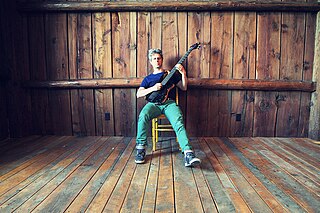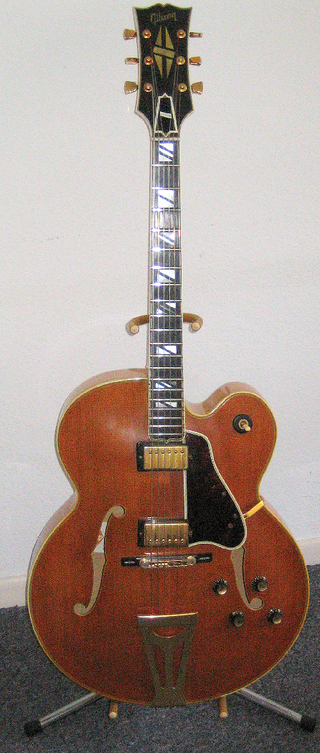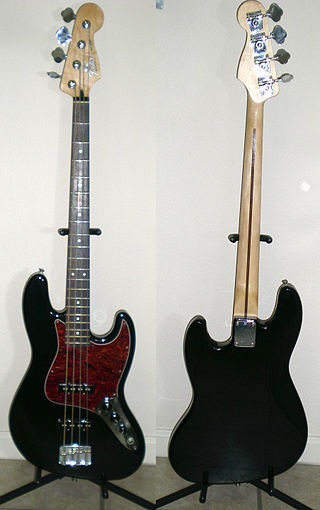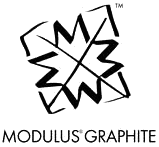Paul Languedoc is an American audio engineer and luthier who is most closely associated with the rock band Phish.
Paul Languedoc is an American audio engineer and luthier who is most closely associated with the rock band Phish.
He was the soundman for rock group Phish prior to the band's breakup in 2004. [1] As the band's chief sound engineer and house mixer, he recorded their double-CD A Live One , and all 20 volumes of the Live Phish Series. He also built guitars and basses for Trey Anastasio and Mike Gordon. A luthier by trade, he built his first guitar when he was 18 years old. [2] He later spent four years working for Alan Stack at Time Guitars in Burlington, Vermont, and by the time he had joined Phish in 1986 at age 28, he had built hundreds of instruments. Since then, he has built only for Anastasio and Gordon, and his original designs have given Phish its own unique instrumental identity. Languedoc has a preference for European hardwoods of the types used for building cellos, specializing in inlay work in mother-of-pearl and abalone. Languedoc first worked with Phish on October 15, 1986, at a concert at Hunt's in Burlington, Vermont. He took part in some of the band's earliest tours [3] and remained with the band until their 2004-2009 hiatus. When Phish resumed touring and recording in 2009, Paul Languedoc declined to join them, deciding to retire from the road to focus on his luthier duties. In March 2009, Garry Brown took over the task of soundman for Phish.
Gordon says Languedoc's striking instruments are only one aspect of the many talents he brings to the Phish sound. "We're really lucky to have Paul. He gives us the freedom to do our own thing."[ citation needed ]
Named for its intricate headstock inlay, the Dragon bass (built in 1989) has a five-piece curly-maple neck and a bound ebony fingerboard. The body is solid koa, with a face of curly-maple veneer. The guitar bridge and machine heads were made by Schaller. Mike Gordon custom-ordered the instrument's active, 18-volt Mørch pickups from Denmark; they came with myriad knobs and switches Gordon did not want. "I have trouble making decisions," he says. "I probably change my instrument settings only every two years." The three larger knobs on the bass control volume (one per pickup) and pickup blend; the four micro-switches and three smaller knobs are for various midrange contours and high and low boosts. (Languedoc comments, "Even I don't know what they all do!")
Gordon and Languedoc both call the Fish — also named for its inlays — "a bit of an experiment." The bass, which was built about two years ago, has a two-piece curly-maple body with an interior chamber, a koa face with an f-hole and multiple-layered binding, and only one knob, which blends between the two EMG ASB-5 pickups. Mike eventually wants to add a piezo bridge transducer to accentuate the highs of the instrument's hollow body.
In 2006, Paul Languedoc started Languedoc Guitars, selling handmade instruments through his web site. The guitars for sale are near replicas of the hollow-body guitar Trey Anastasio of Phish currently plays. The G2 model guitar sold for $10,000 and the G4 model sold for $7500 as recently as 2009. The G2 features two "F" holes and a pair of Seymour Duncan '59 Model humbuckers; and the G4 has a single "F" hole and a Duncan Custom 5 in the bridge position and a '59 in the neck. As recently as February 2020, Languedoc has zero inventory of new guitars for sale, and his wait-list for future new builds remains listed on his website as "full" and "closed" to accepting new names. [4]
By 2021, he is selling a limited supply of brand new custom made guitars for $20,000 with a 25% deposit to begin. For the custom build, the customer can choose body woods, color (if any), binding, and fretboard inlay. [5]
Ibanez is a Japanese guitar brand owned by Hoshino Gakki. Based in Nagoya, Aichi, Japan, Hoshino Gakki were one of the first Japanese musical instrument companies to gain a significant foothold in import guitar sales in the United States and Europe, as well as the first brand of guitars to mass-produce the seven-string guitar and eight-string guitar. Ibanez manufactures effects, accessories, amps, and instruments in Japan, China, Indonesia, and the United States. As of 2017 they marketed nearly 165 models of bass guitar, 130 acoustic guitars, and more than 300 electric guitars. After Gibson and Fender, Ibanez is considered the third biggest guitar brand.

Ernest Joseph "Trey" Anastasio III is an American guitarist and singer-songwriter best known as the lead guitarist of the rock band Phish, which he co-founded in 1983. He is credited by name as composer of 152 Phish original songs, 141 of them as a solo credit, in addition to 41 credits attributed to the band as a whole.

Michael Eliot Gordon is an American bass guitarist and vocalist most recognized as a founding member of the band Phish. In addition to bass, Gordon is an accomplished banjo player, and is proficient at piano and guitar. He is also a filmmaker and author. He has released six solo studio albums and three studio albums with acoustic guitar pioneer Leo Kottke.
The Fender Starcaster is a series of semi-hollowbody electric guitars made by the Fender company. The Starcaster was part of Fender's attempt to enter the semi-hollowbody market, which was dominated by Gibson's ES-335 and similar designs.

The Gibson ES-335 is a semi-hollow body semi-acoustic guitar introduced by the Gibson Guitar Corporation as part of its ES series in 1958. It features a solid maple wood block running through the center of its body with upper bouts that are hollow and two violin-style f-holes cut into the top over the hollow chambers. Since its release, Gibson has released numerous variations of and other models based on the design of the ES-335.

Jon Fishman is an American drummer and co-founder of the band Phish, which was, in part, named after him. He is credited with co-writing nineteen Phish songs, eight with a solo credit.

An archtop guitar is a hollow acoustic or semi-acoustic guitar with a full body and a distinctive arched top, whose sound is particularly popular with jazz, blues, and rockabilly players.

The Fender Jazz Bass is the second model of electric bass created by Leo Fender. It is distinct from the Precision Bass in that its tone is brighter and richer in the midrange and treble with less emphasis on the fundamental frequency. The body shape is also different from the Precision Bass, in that the Precision Bass has a symmetrical lower bout on the body, designed after the Telecaster and Stratocaster lines of guitars, while the Jazz Bass has an offset lower bout, mimicking the design aesthetic of the Jaguar and Jazzmaster guitars.
Variax was the name of a line of guitars developed and marketed by Line 6 between 2002 and 2023. They differed from typical electric and acoustic guitars in that internal electronics processed the sound from individual strings to model (replicate) the sound of specific guitars and other instruments. The maker claims it was the first guitar family able to emulate the tones of other notable electric and acoustic guitars. It also provided a banjo and a sitar tone. The Variax was available primarily in electric guitar models, but acoustic and electric bass guitar models have also been available in the past.

Modulus Graphite is an American manufacturer of musical instruments best known for building bass guitars with carbon fiber necks. The company, originally called Modulus Graphite, was founded in part by Geoff Gould, a bassist who also worked for an aerospace company in Palo Alto, California, and coworker Jerry Dorsch. When they split, Jerry started Graphite Guitar Systems in Washington state.

The Fender Coronado is a double-cutaway thin-line hollow-body electric guitar, announced in 1965. It is manufactured by Fender Musical Instruments Corporation. The aesthetic design embodied in the Coronado represents a departure from previous Fender instruments; the design remains an uncharacteristic piece of Fender history.
The Gibson ES series of semi-acoustic guitars are manufactured by the Gibson Guitar Corporation.
John Birch was an English luthier mainly known for his electric guitars. His customers included Tony Iommi and Geezer Butler of Black Sabbath, Brian May of Queen, Manny Charlton of Nazareth, Dave Hill and Jim Lea of Slade, Gerry Shephard of The Glitter Band, Roy Orbison and Nicky Panicci.

Duesenberg is a brand for electric string instruments founded in 1986 and located in Hannover, Germany. The headquarter is in Hannover, Germany, they are known for using a Plek machine for the levelling of frets and setup. Duesenberg has uploaded a factory production video of how their guitars are made, revealing that most of the production of the guitars is done in Croatia, while the final setup and assembly is done in Germany.
Ken Lawrence Instruments is a manufacturer of custom guitars and bass guitars founded by Ken Lawrence in 1986. Besides building instruments, Lawrence has also performed as a bassist both live and in recording sessions. Lawrence began building instruments in 1981 at Moonstone Guitars, and five years later, he set up his own company.

The Peavey EVH Wolfgang guitar series is a collaboration between guitarist Eddie Van Halen and Hartley Peavey's company, Peavey Electronics. The EVH stands for "Eddie Van Halen" while Wolfgang is the name of Eddie Van Halen's son.
The Fender Telecaster, colloquially known as the Tele, is an electric guitar produced by Fender. Together with its sister model the Esquire, it was the world's first mass-produced, commercially successful solid-body electric guitar. Its simple yet effective design and revolutionary sound broke ground and set trends in electric guitar manufacturing and popular music.

Chicago '94 is a live album by the rock band Phish. It contains two complete concerts on six CDs, and was recorded at the UIC Pavilion in Chicago, Illinois on June 18 and November 25, 1994. It was released by JEMP Records on July 31, 2012.

Ventura is a live album by the rock band Phish. It contains two complete concerts on six CDs. It was recorded on July 30, 1997, and July 20, 1998, at the Ventura County Fairgrounds in Ventura, California. Packaged as a box set, it was released by JEMP Records on June 18, 2013.